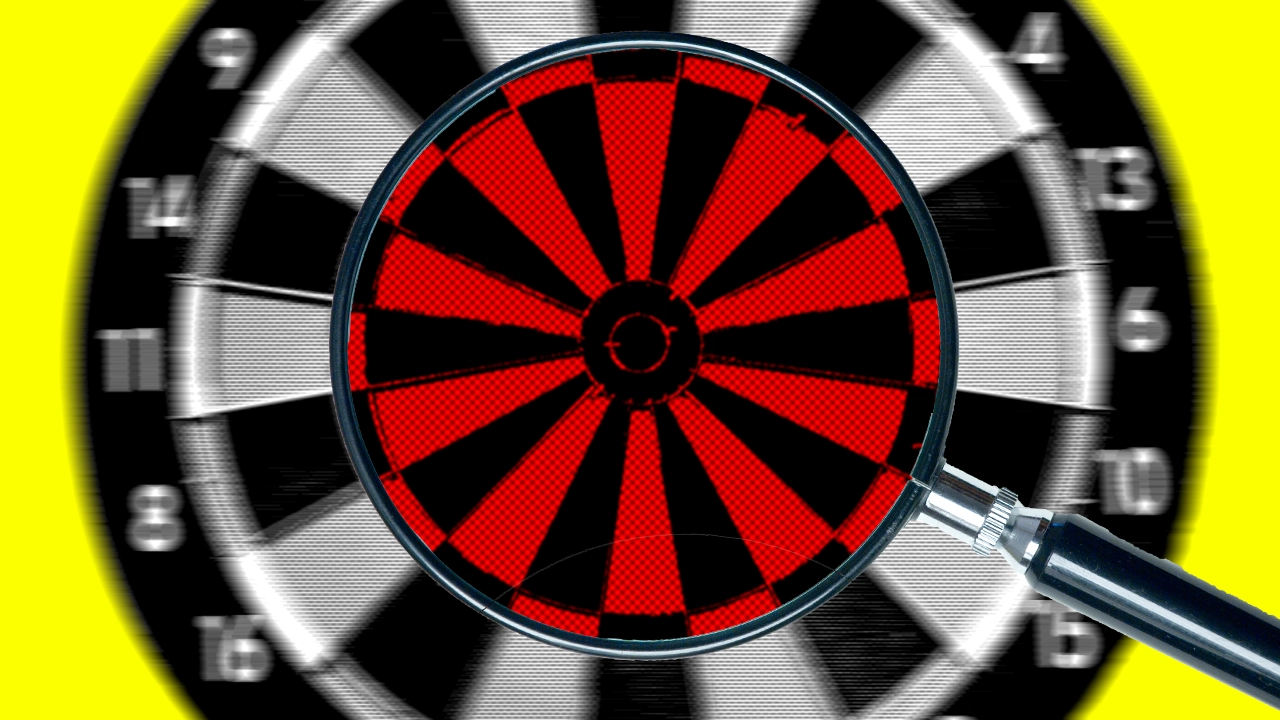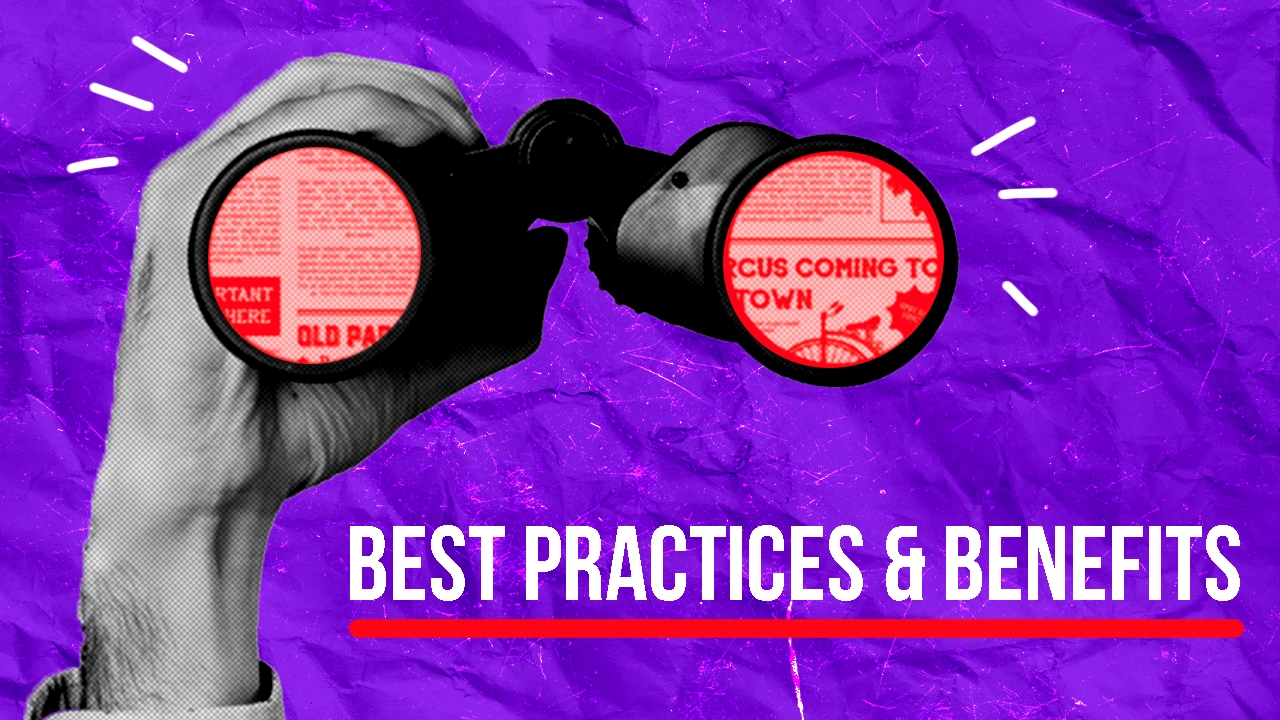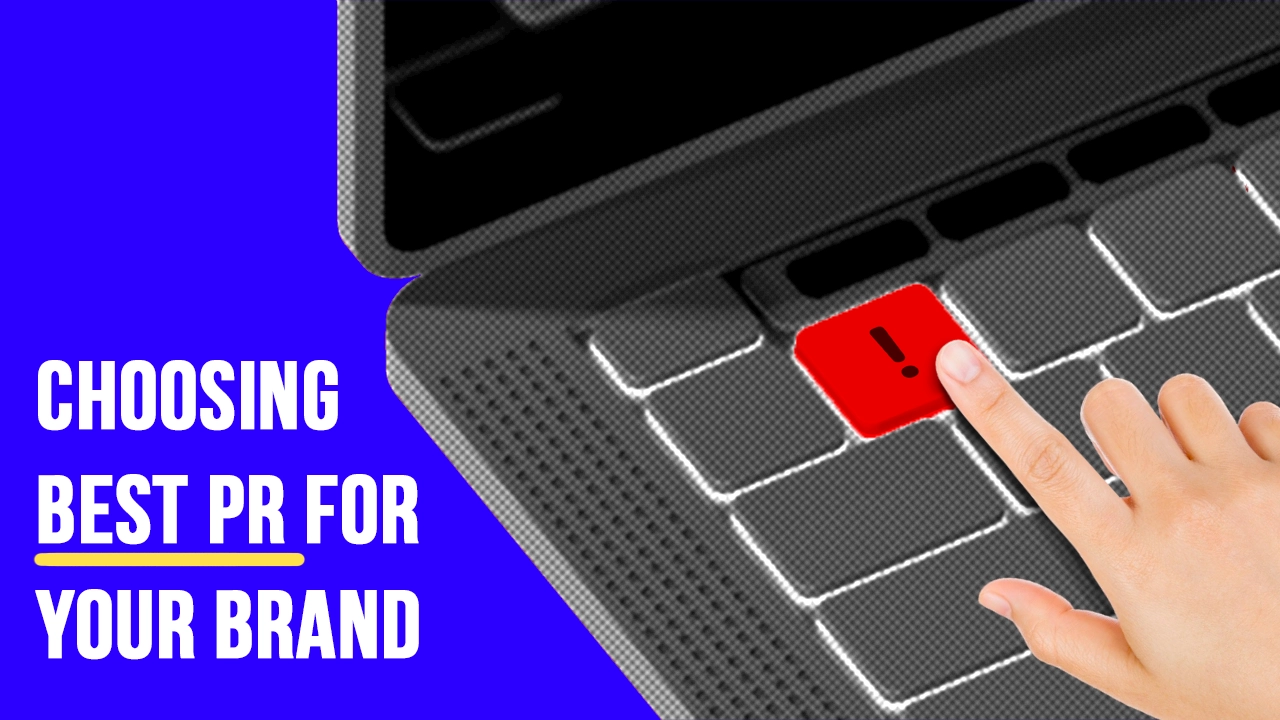Introduction: Why Your Press Release Isn’t Getting the Attention It Deserves
A well-crafted press release can be a powerful tool for brand awareness, media exposure, and search engine visibility. However, many businesses struggle with low visibility issues in their press release distribution efforts. Despite sending out press releases to multiple platforms, they receive little to no media coverage, and their announcements fail to generate the expected traction.
The primary reason behind this failure is ineffective press release distribution strategies. Many businesses assume that simply submitting their press releases to a distribution service will automatically guarantee visibility. However, this approach often leads to press releases getting lost in a sea of thousands of similar announcements, ignored by journalists, and failing to rank in Google News and search results.
What Causes Low Press Release Visibility?
Several factors contribute to poor visibility, including:
- Lack of Targeting – Sending press releases to irrelevant media contacts or mass-distributing without audience segmentation results in low engagement.
- Poor SEO Optimization – Without the right keywords, meta descriptions, and formatting, your press release won’t appear in search results.
- Weak Headlines and Content Structure – If your press release isn’t structured for both readers and algorithms, it won’t grab attention.
- Ignoring Digital PR and Social Media – Relying solely on traditional press release distribution without leveraging social media and influencers limits reach.
This article provides a comprehensive guide to fixing low visibility issues with targeted press release distribution strategies. You’ll learn how to optimize for SEO, refine your media outreach, and leverage digital PR techniques to get your press release noticed.
Additionally, we’ll explore real-world case studies from GlobalWave PR that showcase how businesses successfully overcame press release visibility challenges to achieve significant media exposure.
Need expert assistance with press release distribution?
Partner with GlobalWave PR for a customized PR strategy that maximizes your reach.
Table of Contents
Understanding Low Visibility in Press Release Distribution

Why Traditional Press Release Distribution Methods No Longer Work
In the past, businesses could distribute press releases through newswire services and expect guaranteed visibility. However, with increasing competition and changing media consumption habits, traditional press release distribution is no longer enough.
Here’s why outdated PR distribution strategies often fail:
Over-Reliance on Mass Distribution Services
Many businesses use press release distribution platforms like PR Newswire or Business Wire, assuming their announcement will reach relevant journalists. However, most of these platforms distribute to a broad audience without personalization, which means:
- Journalists receive generic, mass-distributed press releases that don’t align with their interests.
- Media professionals are overwhelmed with thousands of similar press releases daily.
- Without proper targeting, your press release gets buried and ignored.
Solution: Instead of mass distribution, focus on targeted outreach by identifying and pitching to journalists who specialize in your industry.
Lack of Proper Press Release SEO Optimization
If your press release isn’t optimized for search engines, it won’t rank in Google News, industry blogs, or even company websites. SEO is critical for ensuring that your press release remains discoverable over time.
Key SEO issues affecting press release visibility:
- Lack of keyword integration – Press releases should include relevant primary and secondary keywords that people search for.
- Poor structure and formatting – Google favors structured, well-organized press releases with bullet points and subheadings.
- Weak backlinks – Press releases with authoritative outbound links to relevant sources rank higher.
Solution: Use SEO-friendly formatting, include relevant keywords, and add structured data to improve search engine rankings.
No Audience Segmentation or Targeted Outreach
A common mistake businesses make is sending press releases to general media lists instead of focusing on industry-specific journalists and publications.
- If a press release is sent to the wrong audience, it will be ignored or deleted.
- Journalists prefer receiving exclusive, highly relevant stories rather than mass-distributed content.
- Press releases targeted at industry-specific blogs, trade publications, and niche media outlets perform better.
Lack of Multimedia Elements (Images, Videos, and Infographics)
Journalists prefer visually engaging press releases that include high-quality images, videos, or infographics. Many businesses fail to include multimedia elements, which results in:
- Lower engagement from journalists and readers.
- Reduced chances of press releases being featured on news platforms.
- Poor social media shareability.
Solution: Add multimedia elements such as high-resolution images, video snippets, and branded infographics to make your press release more appealing and shareable.
Ignoring Social Media and Digital PR Amplification
Many businesses solely rely on traditional press release distribution channels without repurposing content for social media, blogs, and influencer networks.
- A press release that isn’t shared on social media loses potential traffic and engagement.
- Influencers and industry leaders can help amplify a press release’s reach.
- Social signals boost SEO rankings, helping the press release appear in search results.
Solution: Promote your press release on LinkedIn, Twitter, and relevant Facebook groups. Also, collaborate with influencers and industry experts to gain more exposure.
How Targeted Press Release Distribution Can Solve Visibility Issues
Instead of relying on mass distribution and outdated PR strategies, businesses should implement a targeted press release distribution approach to improve visibility.
What is Targeted Press Release Distribution?
Targeted press release distribution is a strategic approach where businesses selectively send their press releases to journalists, influencers, and publications that align with their industry, niche, and target audience.
Example: A tech startup should not send its press release to fashion journalists. Instead, it should target business, technology, and startup media outlets.
Key Benefits of Targeted Press Release Distribution
- Higher Engagement Rates – Journalists are more likely to feature a press release if it aligns with their niche.
- Better Search Engine Rankings – Optimized press releases perform better in Google News and organic search.
- Increased Media Coverage – Targeting industry-specific journalists boosts the chances of coverage.
- Enhanced Brand Credibility – Being featured in relevant, authoritative media outlets builds trust and credibility.
- More Social Media Exposure – Influencers and digital PR play a key role in amplifying a press release.
Final Thoughts on Improving Press Release Visibility
Press release visibility issues stem from outdated distribution tactics, poor targeting, and lack of SEO optimization. By adopting targeted distribution strategies, businesses can significantly improve media coverage and search engine rankings.
In the following sections, we’ll dive deeper into advanced PR distribution strategies, case studies of successful press releases, and actionable steps you can take to maximize visibility.
Continue reading to discover real-world case studies and learn how businesses successfully tackled press release visibility issues with GlobalWave PR.
Key Reasons Your Press Release Isn’t Getting Noticed

Many businesses struggle with press release visibility due to ineffective distribution strategies. While they may invest time in writing a press release, they often overlook critical factors that determine its success—SEO optimization, targeting the right audience, strategic distribution, and compelling formatting. Without these elements, a press release gets buried in inboxes, overlooked by journalists, and fails to rank in Google News and search engine results.
Understanding why press releases fail and how to fix these issues is essential for increasing visibility, securing media coverage, and maximizing engagement. Below, we explore the most common reasons press releases do not get noticed and provide actionable solutions to enhance their impact.
Weak Headlines and Poor Formatting: The First Barrier to Visibility
A press release headline is the first and often the only chance to capture a journalist’s attention. If the headline lacks clarity, engagement, or relevance, the press release will likely be ignored. Journalists receive hundreds of press releases daily, and only those that immediately convey value get opened and read.
Common Issues with Press Release Headlines:
- Generic wording with no clear news angle (e.g., “Company Announces New Service”).
- Overly long headlines that get cut off in search results and email subject lines.
- Lack of relevant keywords, making it difficult for search engines to rank the press release.
- No compelling hook that demonstrates why the news is significant.
How to Optimize Press Release Headlines for Maximum Impact:
- Keep it concise and compelling, ideally under 70 characters for better readability.
- Incorporate primary keywords naturally to improve SEO and search rankings.
- Use numbers, data, or power words to make the headline more engaging.
- Clearly define the news value to ensure relevance to journalists and readers.
Example of a Well-Optimized Headline:
- Poor: “Company Announces Product Launch”
- Improved: “Tech Startup Unveils AI-Powered CRM Tool, Cutting Customer Response Time by 40%”
A well-crafted headline increases open rates, improves search rankings, and ensures journalists immediately understand the relevance of the announcement.
Lack of SEO Optimization: Why Your Press Release Isn’t Ranking Online
Search engine optimization (SEO) is critical for ensuring long-term visibility of a press release. Even if journalists do not pick up a press release immediately, an SEO-optimized press release can continue to drive traffic, appear in search results, and generate engagement over time.
Common SEO Mistakes in Press Releases:
- Not including relevant keywords that align with search intent.
- Poor formatting and structure, making it difficult for search engines to index the content.
- Lack of internal and external links, which weakens the authority of the press release.
- Absence of multimedia elements, reducing engagement and visibility.
How to Optimize a Press Release for Search Engines:
- Use targeted keywords in the headline, subheadings, and first 100 words.
- Break the content into sections with H2 and H3 subheadings for better readability.
- Include authoritative backlinks to relevant pages on the company website and external sources.
- Add multimedia elements such as images, infographics, and embedded videos to enhance visibility.
- Optimize for Google News by using structured data markup.
Example of an SEO-Optimized Opening Paragraph:
• Poor: “Our company recently launched a new product that is expected to perform well in the market.”
• Improved: “XYZ Corp, a leader in AI-driven customer service solutions, has launched AI Assistant 2.0, an advanced chatbot designed to enhance customer interactions. With AI-powered automation, businesses can improve response times by 40%, leading to greater customer satisfaction.”
By incorporating strong keywords, strategic structuring, and multimedia enhancements, a press release can significantly improve its ranking in Google Search and Google News, ensuring it remains discoverable over time.
Poor Targeting: Why Sending Press Releases to the Wrong Audience Reduces Engagement
A one-size-fits-all approach to press release distribution is ineffective. Sending a press release to irrelevant journalists, outdated media lists, or generic PR distribution platforms results in low open rates and minimal media coverage.
Common Targeting Mistakes:
- Sending to general media lists without identifying industry-specific journalists.
- Failing to research journalists’ interests, leading to irrelevant pitches.
- Not considering niche media outlets that may have a more engaged audience.
- Ignoring trade publications, blogs, and social media influencers who can amplify reach.
How to Improve Press Release Targeting:
- Build a segmented media list that includes journalists who cover relevant topics.
- Use AI-powered PR tools to find journalists actively writing about similar subjects.
- Personalize media pitches to align with the journalist’s previous work.
- Leverage trade publications and niche websites that cater to the target industry.
Example of a Personalized Media Pitch:
• Poor: “We thought you might be interested in this press release about our new product.”
• Improved: “Since you recently covered AI-driven automation in customer service, we wanted to share an exclusive on XYZ Corp’s new AI chatbot that has been shown to reduce response times by 40%.”
No Clear Call-to-Action (CTA): How to Drive Engagement from Your Press Release
A press release should prompt action, whether that’s media inquiries, event sign-ups, or website visits. Without a strong Call-to-Action (CTA), journalists and readers are left unsure of what to do next.
Common CTA Mistakes in Press Releases:
- No clear directive on the next steps.
- Vague language that does not encourage immediate action.
- Lack of contact details, making it difficult for journalists to follow up.
How to Craft an Effective CTA:
- Use action-oriented language to encourage engagement.
- Ensure the CTA aligns with the press release’s purpose, such as scheduling an interview, downloading a report, or attending an event.
- Include direct contact information, such as a PR representative’s name, phone number, and email.
Example of an Effective CTA:
• Poor: “For more details, visit our website.”
• Improved: “For media inquiries, exclusive interviews, or product demonstrations, contact John Doe at press@xyzcorp.com or call (555) 123-4567.”
A strong CTA increases engagement, encourages follow-ups, and improves the overall effectiveness of a press release.
For expert press release strategy and media outreach, GlobalWave PR provides tailored press release distribution solutions designed to maximize visibility and engagement.
The Power of Targeted Press Release Distribution: How to Ensure Maximum Visibility
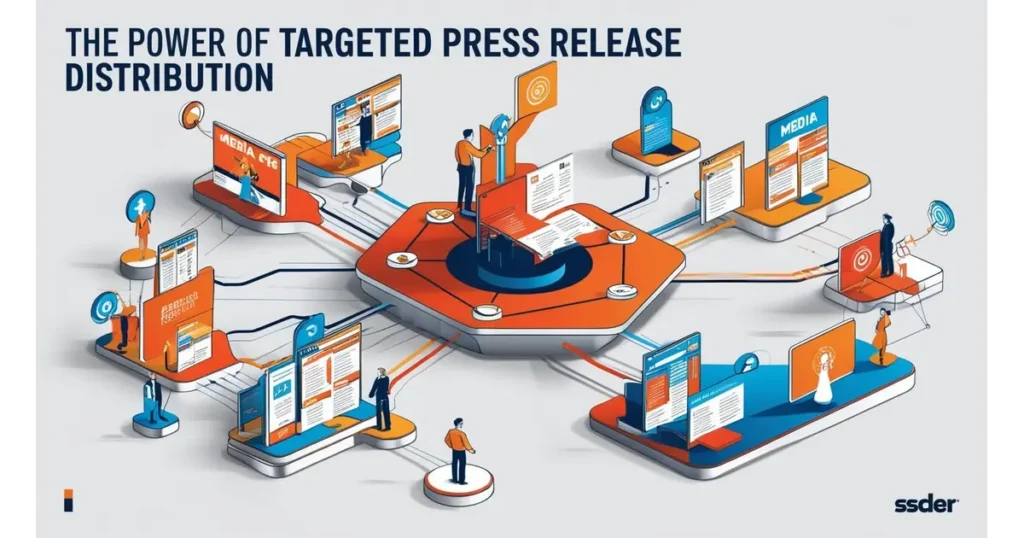
The effectiveness of a press release is not solely dependent on the quality of its content; it also relies on how and where it is distributed. Many businesses assume that submitting a press release to a distribution service guarantees media coverage, but without a targeted approach, most press releases get lost in a sea of similar announcements.
Why Traditional Press Release Distribution Falls Short
Traditional press release distribution relies on mass submission to wire services, media lists, and PR platforms. While these services ensure that a press release is published on various online PR sites, they do not guarantee that journalists, influencers, or potential customers will actually engage with the content.
Here’s why mass distribution often fails:
- Lack of Personalization – Journalists receive hundreds of press releases daily. If the pitch is not personalized to their beat or interests, it is likely to be ignored.
- No Audience Segmentation – Sending a press release to irrelevant journalists or media outlets reduces the chances of coverage.
- Failure to Optimize for Search Engines – Press releases not optimized for Google News, industry keywords, and backlinks will not generate long-term organic traffic.
- No Social Media or Influencer Engagement – Many press releases are not shared beyond PR platforms, limiting their potential reach.
How Targeted Press Release Distribution Maximizes Media Coverage
Instead of using a generic approach, targeted press release distribution ensures that a press release is delivered to the right journalists, media platforms, industry influencers, and digital publishers. This results in:
- Higher Engagement Rates – Journalists are more likely to cover stories that are relevant to their beat.
- Increased Media Pickups – Targeted outreach improves the chances of securing coverage in major publications.
- SEO Benefits – Properly placed press releases gain backlinks and organic traffic, improving search engine rankings.
- Better ROI on PR Campaigns – Instead of wasting resources on mass distribution, targeted distribution focuses on high-impact placements.
Steps to Achieve Targeted Press Release Distribution
Identify the Right Journalists and Media Outlets
Not all media outlets are suitable for every press release. Identifying the right journalists and publications is crucial for maximizing coverage.
- Use PR databases, LinkedIn, and media outreach tools to find journalists covering similar stories.
- Look at competitor press coverage to identify relevant publications.
- Prioritize industry-specific blogs, trade magazines, and news platforms.
Personalize Media Pitches for Journalists
A generic pitch sent to hundreds of journalists will not be effective. Instead, personalized media outreach significantly improves response rates.
- Address journalists by name and reference their recent articles to show relevance.
- Keep pitches concise, engaging, and focused on why the story matters.
- Offer exclusive insights, interviews, or data to increase appeal.
Leverage Industry-Specific PR Channels
Rather than relying solely on mainstream media, businesses should focus on industry-specific publications, blogs, and digital platforms that cater to their niche audience.
- Tech startups should target sites like TechCrunch, Wired, and VentureBeat.
- Healthcare companies should focus on industry platforms like MedTech News and Health IT Journal.
- Fashion brands should pitch to fashion bloggers, influencers, and style magazines.
Optimize for Digital PR and Social Media Distribution
A successful press release does not end with journalist outreach. Leveraging social media, digital PR strategies, and influencer marketing ensures wider reach.
- Share press releases on LinkedIn, Twitter, and industry-specific Facebook groups.
- Encourage company executives and employees to share the release on their professional networks.
- Collaborate with relevant influencers and digital content creators to amplify the message.
Case Studies: Real-World Success Stories in Targeted Press Release Distribution
The effectiveness of strategic press release distribution is best demonstrated through real-world success stories. Below are case studies from GlobalWave PR showcasing how targeted press release strategies led to significant media coverage and brand visibility.
Case Study 1: Hasiru Agro – Sustainable Agriculture PR Success
Challenge:
Hasiru Agro, a sustainable agriculture startup, struggled to gain mainstream media coverage despite having innovative eco-friendly solutions. Their previous press releases had low visibility and engagement.
Solution:
- Targeted distribution to agricultural and environmental journalists.
- SEO-optimized press release for better ranking on Google News.
- Outreach to sustainability influencers to amplify engagement.
Results:
- Featured in top agriculture and sustainability publications.
- Increased website traffic by 120% within three weeks.
- Generated interest from investors and industry stakeholders.
📌 Read the full case study: Hasiru Agro’s PR Success
Case Study 2: Sudipta’s English Academy – National Recognition through PR
Challenge:
Sudipta’s English Academy had a unique language training model, but struggled with brand awareness beyond local markets.
Solution:
- Developed a compelling story angle focusing on personal success stories of students.
- Distributed press releases to education journalists and e-learning publications.
- Utilized LinkedIn PR campaigns to reach a professional audience.
Results:
- Secured coverage in national education magazines and digital publications.
- Increased student enrollments by 80% in six months.
- Improved search rankings, leading to higher organic traffic and inquiries.
📌 Read the full case study: Sudipta’s English Academy PR Strategy
Case Study 3: House of Makeba – Elevating a Fashion Brand Through PR
Challenge:
House of Makeba, a fashion brand, needed national and international exposure to attract high-end clientele and investors.
Solution:
- Focused on luxury fashion and lifestyle publications.
- Partnered with fashion bloggers and influencers to drive engagement.
- Used press releases featuring designer interviews to create compelling narratives.
Results:
- Featured in top fashion magazines and digital outlets.
- Increased brand credibility and secured retail partnerships.
- Gained significant traction on social media, leading to higher sales and brand awareness.
📌 Read the full case study: House of Makeba PR Strategy
Common Press Release Mistakes & How to Fix Them
Even with a well-written press release, certain mistakes can significantly reduce its effectiveness. Understanding these pitfalls and knowing how to fix them ensures your press release gets noticed, ranks higher in search results, and secures media coverage. Below are some of the most common mistakes businesses make when distributing press releases, along with actionable solutions to improve visibility and engagement.
Weak or Unclear Story Angle: Why Journalists Ignore Press Releases
One of the primary reasons press releases fail is because they lack a compelling story. Journalists are looking for newsworthy, timely, and relevant content. If a press release does not answer the “Why should my audience care?” question, it is unlikely to be published.
Common Storytelling Mistakes:
- Press releases that sound like advertisements rather than genuine news stories.
- Lack of a clear hook or unique angle that differentiates the announcement.
- Failure to include statistics, real-world impact, or industry relevance.
How to Fix It:
- Identify a clear, compelling news hook (e.g., a major product launch, industry trend, or research findings).
- Incorporate data, testimonials, or success stories to support the announcement.
- Frame the press release in a way that aligns with current industry discussions.
Example: Instead of announcing a generic product launch, focus on how the product solves a key industry problem or introduces a unique innovation.
Overuse of Jargon and Promotional Language
A press release should be informative and engaging, not a sales pitch. Many businesses make the mistake of using excessive technical jargon or overly promotional language, which turns off journalists and reduces credibility.
Common Issues:
- Using corporate jargon that makes the press release difficult to understand.
- Over-promoting a product or service, making it sound like an advertisement.
- Failing to write in a neutral, journalistic tone.
How to Fix It:
- Write in a clear, concise, and journalistic style that focuses on facts.
- Use simple, professional language to ensure accessibility to a broad audience.
- Stick to a third-person perspective and avoid direct sales pitches.
Example: Instead of writing “Our revolutionary, game-changing software is disrupting the industry,” try “The newly launched software streamlines business operations by reducing processing time by 40%.”
Poor Press Release Formatting and Structure
Journalists and editors scan press releases quickly. A poorly formatted press release makes it difficult to read and decreases the likelihood of media coverage.
Formatting Mistakes That Reduce Visibility:
- Large blocks of text with no subheadings or bullet points.
- No clear “Who, What, When, Where, Why” structure.
- Lack of media contact information for journalists to follow up.
How to Fix It:
- Use short paragraphs, bullet points, and clear subheadings to improve readability.
- Follow the standard press release structure (headline, subheadline, lead paragraph, body, boilerplate, and contact details).
- Include a compelling CTA and journalist-friendly contact information.
Example of an Optimized Press Release Format:
- Headline: Clearly states the news.
- Subheadline: Provides additional context.
- Lead Paragraph: Answers the “Who, What, When, Where, Why” in one concise paragraph.
- Body Paragraphs: Provide supporting details, quotes, and data.
- Boilerplate: Company background information.
- Contact Details: Media representative name, email, and phone number.
Measuring & Improving Press Release Performance
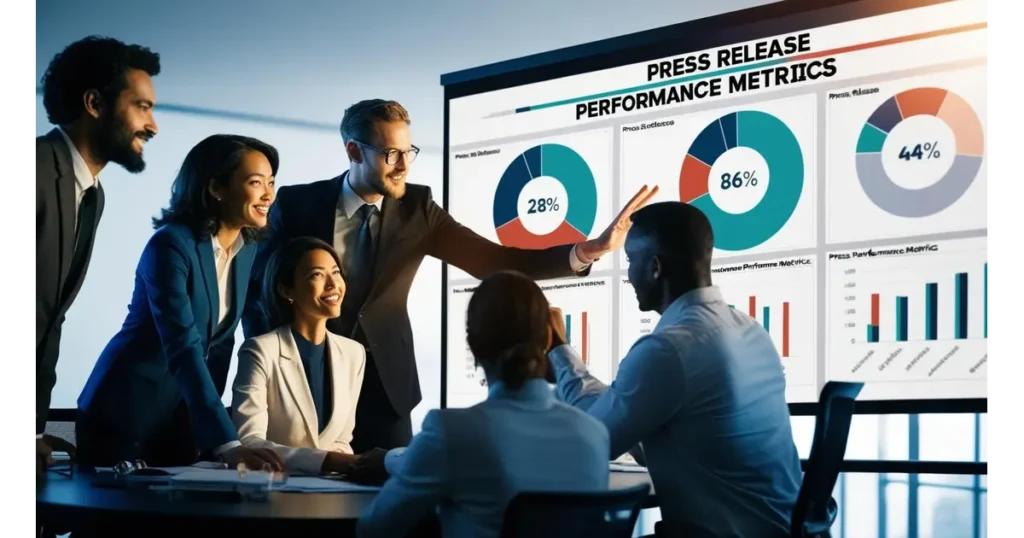
A press release’s success isn’t just about publishing it—it’s about tracking performance, analyzing results, and improving future PR efforts. Businesses must measure key performance indicators (KPIs) to determine the effectiveness of their press releases and refine their PR strategy accordingly.
1. Key Metrics to Track Press Release Performance
To evaluate how well a press release performs, businesses should track the following metrics:
1. Media Pickups and Mentions
- How many journalists and media outlets covered the press release?
- Were there any high-authority publications featuring the release?
2. Website Traffic & Backlinks
- How many visitors did the press release drive to the company website?
- Did the press release generate SEO backlinks that improved search rankings?
3. Engagement Metrics
- How many shares and interactions did the press release receive on social media?
- Did it generate comments, inquiries, or interview requests?
4. Email Open & Click-Through Rates
- If the press release was sent via email, what was the open rate and click-through rate?
Tools to Analyze Press Release Performance
Businesses can use various tools to track the impact of their press releases:
- Google Analytics – Tracks website traffic generated from press release links.
- Google News & Search Console – Monitors rankings and visibility in Google News.
- PR Software (e.g., Meltwater, Cision, Muck Rack) – Measures media pickups and journalist engagement.
- SEO Tools (e.g., Ahrefs, SEMrush) – Analyzes backlinks and keyword rankings.
GlobalWave PR Press Release Distribution Services
Press release distribution requires more than just publishing content—it requires a strategic approach, expert targeting, and continuous optimization. GlobalWave PR specializes in high-impact press release distribution that ensures businesses achieve maximum media visibility and engagement.
Why Choose GlobalWave PR?
- Targeted Media Outreach – Press releases are sent to industry-specific journalists and publications for higher coverage rates.
- SEO-Optimized Press Releases – Ensuring press releases rank in Google News and organic search results.
- Digital PR & Social Media Amplification – Expanding reach beyond traditional media.
- Analytics & Performance Tracking – Providing detailed insights on press release success.
Want expert press release distribution? Learn more at GlobalWave PR.
Frequently Asked Questions (FAQs)
1. How long does it take for a press release to get media coverage?
Press release pickup varies, but with targeted distribution and journalist outreach, businesses can see results within a few days.
2. Can a press release improve SEO?
Yes. A well-optimized press release ranks in Google search results, builds backlinks, and drives organic traffic.
Conclusion: How to Ensure Your Press Release Achieves Maximum Visibility
Press release distribution requires a strategic, data-driven approach. By focusing on SEO, targeted outreach, proper formatting, and performance tracking, businesses can significantly improve their press release visibility.
For businesses looking for a comprehensive, results-driven press release distribution service, GlobalWave PR offers expert PR solutions to ensure maximum impact, media coverage, and audience engagement.

